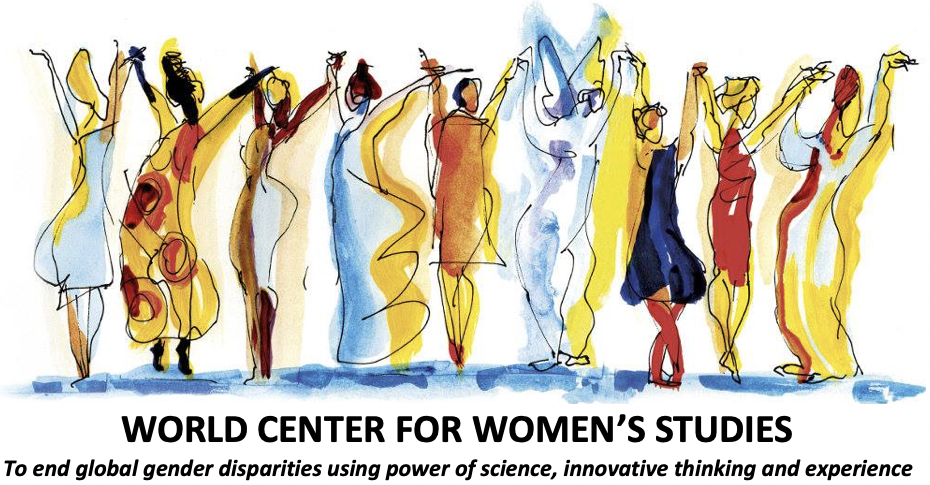As the COVID-19 pandemic continues to ravage the world, another underlying pandemic is happening concurrently. This pandemic is COVID-19s effect on women’s health and overall well being. As lockdown procedures have been implemented all around the world, women are finding themselves in more and more precarious situations. Inequalities that existed before the COVID-19 pandemic have been exacerbated and progress that has been made in the movement to make women equal face the threat of being undone. These effects are particularly seen in areas of women’s interactions with the economy, health, and safety.
 As the United Nations policy brief on the impact of COVID-19 on women details, the global response to COVID-19 and the resulting economic fallout will disproportionately affect women and girls. This is due to the fact that globally, women and girls earn less than men, are less likely to save and have less secure jobs. This means that their ability to survive an economic recession is less than their male counterparts. Additionally, women make up the majority of single-parent households and so are at a greater risk of not having any familial support systems to rely on in times of financial struggle and, as a result, are more likely to feel the brunt of economic issues. Economic challenges put women and girls in a vulnerable position which could lead to them taking high-risk jobs to ensure their survival and could lead to them being exploited and abused.
As the United Nations policy brief on the impact of COVID-19 on women details, the global response to COVID-19 and the resulting economic fallout will disproportionately affect women and girls. This is due to the fact that globally, women and girls earn less than men, are less likely to save and have less secure jobs. This means that their ability to survive an economic recession is less than their male counterparts. Additionally, women make up the majority of single-parent households and so are at a greater risk of not having any familial support systems to rely on in times of financial struggle and, as a result, are more likely to feel the brunt of economic issues. Economic challenges put women and girls in a vulnerable position which could lead to them taking high-risk jobs to ensure their survival and could lead to them being exploited and abused.
The safety of women and girls have been impacted by the pandemic as gender-based violence (GBV) has increased. “Before the pandemic, it was estimated that one in three women will experience violence during their lifetimes. Many of these women are now trapped in their homes with their abusers” (Policy Brief: The Impact of COVID-19 on Women, 17). Since lockdown procedures were enacted globally, some countries have reported a 25% increase in reported cases of GBV, and reporting has doubled in some other countries. This is not all-encompassing because some countries do not have systems that record or measure reports of this nature and gender-based violence is generally underreported and therefore undercounted. The increase of GBV can be attributed mostly to women being physically trapped with their abusers. It has also been speculated that substance abuse by domestic partners resulting from being temporarily or permanently out of work has been a factor in the increase in GBV.
 Globally, women are clustered in low paying, health care jobs like nursing, in-home health care, midwifery, etc. This puts them at higher risk of contracting COVID-19 due to the essential nature of their jobs and the human interaction aspects of it. Female frontline workers are at higher risk of contracting COVID-19. This can be seen in countries like the United States, Spain, and Italy where over 60% of frontline healthcare workers who were infected by the virus were women. Beyond the obvious health impacts of the COVID-19 pandemic, there are additional health risks that women face due to the pandemic. During times of health crises, women’s health care is adversely impacted. One of the biggest areas of women’s health care that is adversely affected by health crises is reproductive health care. Due to already existing restrictive social norms and discriminative practices, quality access to reproductive services like abortions, maternal care, birth control access, etc. Additionally, women make up the majority of unpaid care workers and are expected to take care of their family members, often on top of working full- or part-time and other unpaid domestic work.
Globally, women are clustered in low paying, health care jobs like nursing, in-home health care, midwifery, etc. This puts them at higher risk of contracting COVID-19 due to the essential nature of their jobs and the human interaction aspects of it. Female frontline workers are at higher risk of contracting COVID-19. This can be seen in countries like the United States, Spain, and Italy where over 60% of frontline healthcare workers who were infected by the virus were women. Beyond the obvious health impacts of the COVID-19 pandemic, there are additional health risks that women face due to the pandemic. During times of health crises, women’s health care is adversely impacted. One of the biggest areas of women’s health care that is adversely affected by health crises is reproductive health care. Due to already existing restrictive social norms and discriminative practices, quality access to reproductive services like abortions, maternal care, birth control access, etc. Additionally, women make up the majority of unpaid care workers and are expected to take care of their family members, often on top of working full- or part-time and other unpaid domestic work.
Lastly, the psychological health of women and girls have also been greatly impacted by COVID-19. Being at a higher risk of infection at work has been linked to an increase in anxiety, stress, and depression in women. Women’s psychological well-being also suffers from the stress of job loss, especially in situations where the woman is the primary breadwinner in the household and are responsible for the well-being of others. Women are also relied upon to perform emotional labor even at times where it requires their own mental health to suffer.
In normal times, women face inequality at staggering rates. Women suffer disproportionately during times of crises, this pandemic has proven to not be different in that aspect. Now, in a time of a global health crisis, these inequalities are being exacerbated. To combat this, we need to center women in any countermeasure processes that take place from now on. Women are undeniably going to be a major part of the rebuilding process after this pandemic passes so it is crucial for them to be included from the get-go. We cannot continue to allow the progress that has been made in gender equality to keep backsliding. We need to choose to center women in our responses so that the progress is not undone.
Written By: Ebehitale Imobhio
Featured Photo Credit: Retha Ferguson on Pexels.com





Putem livra si in Ardeal cu firma de curierat rapid. Laptele de capra il congelam in perioada de vara si ajunge in conditii bune in toata tara. In perioada rece nu ar trebui sa fie probleme. Ingaberg Levy Ciapha